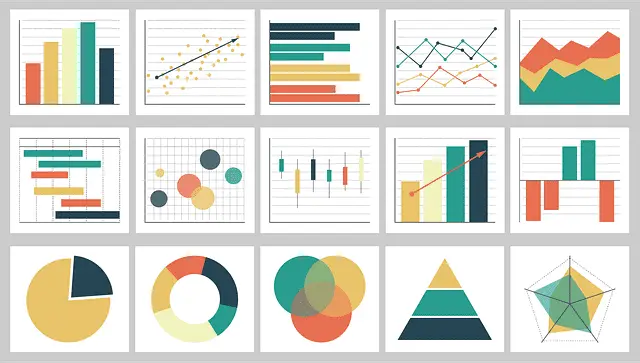Data science is one of the most information oriented professions and when it comes to creating and using insights it crucially depends on programming languages.
Table of Contents
ToggleAmong the myriad of tools available, one language stands out for its versatility, robust statistical capabilities, and vibrant community: Finally, the correspondence is about R programming.
This guide aims at providing you with a general outlook of what r programming is all about, an indication of the history of creation, benefits, uses and how one can get to the advanced level of using r programming language.
R programming Language
R is an environment and programming language that can be obtained free of cost which is especially designed for statistic computation and graphics.
As a widely used statistics programming language, R was launched by Ross Ihaka and Robert Gentleman at the University of Auckland, New Zealand, in the early 1990 s.
It has numerous packages contributing thousands of developers; it supports various domains such as finance, health, social science, and so on.
The Evolution of R Programming

Origins and Development: Looking at the origin of R programming language, it dates back to early 1990s at the University of Auckland, New Zealand done by Ross Ihaka and the assistance of Robert Gentleman.
In this work, we discuss the origins of R and its development throughout the years, and how as a language, it was transformed into an open source tool that is now considered a popular language among the academia, industries, and in research works.
Core Features: Exploring on the main aspects that make up of R programming entails being able to access the R interactive setting, built-in packages, powerful statistics functions, and strong graphics and data visualization functions.
You may also read: The Top IDE for R Programming
In this piece, we dwell on why R is preferred when it comes to data analysis and modeling, machine learning, data mining, among other reasons based on the versatility of R to handle large volumes of data as well as different kinds of tasks.
Getting Started with R Programming
Setting Up Your Environment: This tutorial provides a detailed checklist for installing your R ambiance likewise the originative stair of installing R and RStudio, one of the most popular IDE use in R.
We go over setting up an R environment with RStudio, and providing an overview of the structure and basic tools of the R environment.
Hello, World! : The start of the first R programming tutorial is not complete without the ’Hello World!’ phenomenon. then we introduce the R console and show how to run this code for simple command languages, how to enter data and commands, how to add, subtract, multiply and divide, and how to print the result.
These basics create a comfort zone for the students to get familiar with the R syntax used in R programming and to write the code and later on execute it.
Fundamentals of R Programming
Data Structures: Introducing basic data types of R such as vector, matrix, array, list, as well as data frame.
We examine methods to construct, edit and learn components these structures, with the view of understanding how data is stored and managed for analysis or display.
Control Structures: In regard to concepts and structures, it is possible to assert that knowledge of the loops, and conditional statements as key control structures in R programming is essential.
Explaining how code blocks and loops work, we discuss for-loops, while-loops, if and else, and switch-case sections to show how instructions could be automated, decision-making could occur, and data could be iterated through.
Statistical Analysis with R
Descriptive Statistics: Using the facilities within R to carry out other basic descriptive analysis such as measures of central tendency, dispersion and variation, and distribution.
It is also shown how to perform calculations of the summary statistics, how to construct frequency tables as well as histograms, box and scatter plots.
Inferential Statistics: Studying more on inferential statistics tools that include hypothesis testing, confidence intervals and regression with the help of R-software tools.
In this part of the work, a comprehensive explanation of how to perform t test, chi-square test, ANOVA and Linear regression test is done, the interpretation of the results and coming up with a conclusion based on the statistical significance and the level of confidence.
Data Visualization in R

Introduction to ggplot2: Introducing the most commonly used data visualization package in R which many find easy to use androgynous package called ggplot2.
We describe how simple and complex visualizations such as the scatter plots, bar plots, line plots, histograms, and box plots are made by applying the grammar of graphics using the ‘ggplot2’ package.
Customizing Plots: Understanding of some ggplot2 features like colour maps, adding titles and legends, entering any text as x or y, axes and legends adjustments and using ggplot2 themes and faceting for creating publication ready graphics.
We also demonstrate some of the ways in which plots can be specialized for monitoring insights leading to powerful data stories.
Advanced Topics in R Programming
Functional Programming: Discussing functional programming paradigm in R and studied higher-order functions/functions that take other functions as arguments/inputs, anonymous functions (lambda functions), composing functions, and functionals like map, reduce, and filter.
We prove how functional programming paradigms can make the code more comprehensible as well as more manageable and reusable.
Object-Oriented Programming: The concepts of object-oriented programming in R such as class, object, method, and inheritance.
We explain how objects are used in structure of R, how to define own classes and methods and what is the utility of OOP principles for program design.
Mastering R Programming
Data Wrangling: Introducing the process of data cleaning, or data munging, which in R term, is the process of preparing the raw data into an analyzable one.
It illustrates how to deal with the missing data, gather and combine data, and reshape data using some functions and packages such as dplyr and tidyr.
Machine Learning with R: Brief technical descriptions of most of the machine learning methods and algorithms implemented in the R environment, for classification, regression, clustering, as well as for dimensionality reduction.
The second topic looks at various machine learning libraries in R including caret, randomForest, xgboost, Keras and then shows how to build, train and evaluate machine learning models in R.
Conclusion
Looking back at the explorations throughout the world of R programming, it’s clear that R is more than just a programming language with syntax and techniques.
Thus, whether one is the novice who is learning the basics of R programming or an advanced application developer, learning R programming is a enriching and fascinating experience.
R programming encompasses boundless opportunities for experimentation, research, and applications in the still developing and fast growing field of data science thanks to its huge amount of packages, great mathematical and statistical capabilities, and friendly community of users and developers.
Therefore, through focus, hard work, and the love for data computing, one can develop fully to take advantage of R programming language as a tool to solve intricate issues, make sound decisions, and influence the future of data analysis.
Therefore, if you have desire to learn, if you are willing to explore and discover more, come and learn R programming which is going to be your first step in the world of data science.

2 thoughts on “R Programming”